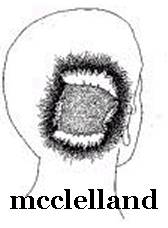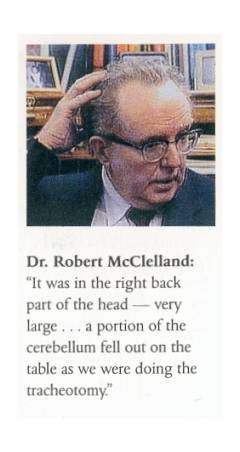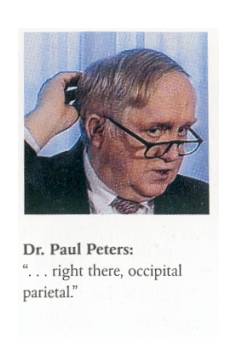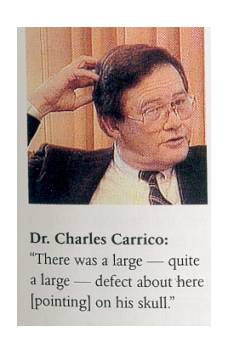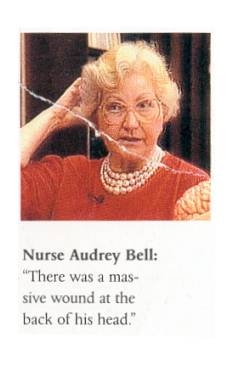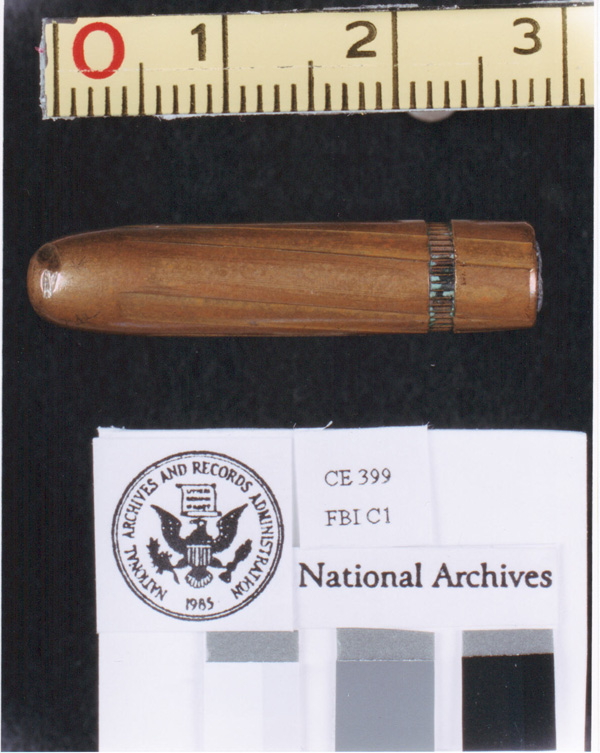The fact that they were emergency room doctors not forensic pathologists.
They were quitre competent at providing emergency care to people in need they were never trained in analyzing wounds to determine minute details such as entance angles and direction.
The doctors who performed the autopsy were trained in such details which is why THEY performed an autopsy
So you don't know ANYTHING about the competence of the doctors who performed the Kennedy autopsy.
The doctors who performed President Kennedy's autopsy were NOT forensic pathologists.
Here is an expert in the field. Dr. Milton Helpern was Chief Medical Examiner of the City of New York, he performed or supervised approximately 60,000 autopsies; and 10,000 of these have involved gunshot wounds in the body.
Dr. Milton Helpern, America's greatest gunshot expert, speaks out.
To fully appreciate the gravity of Dr. Helpern's observations on the medical facts of President Kennedy's death, it is necessary to go back to the historic day of Friday, November 22, 1963.
Sometime between twelve-thirty p.m., when the tragedy struck in Dallas, and the arrival of Air Force One at Andrews Air Force Base just outside of Washington at five-fifty-eight p.m., Mrs. Kennedy decided that the autopsy on her husband's body should be performed at the Naval Medical School in Bethesda, Maryland. She was given two choices: either the Army's Walter Reed Hospital or Bethesda. She selected the Naval Medical School because of the President's World War II service in the Navy.
Certainly, Mrs. Kennedy could not be expected to have any knowledge of forensic medicine; and in her hour and the nation's hour of shock and bereavement, she made a logical choice. The point that disturbs Dr. Helpern, however, is the fact that the choice was left to her. It was not only an unpleasant, additional personal burden which should have been spared her, but it indicates as well the total lack of understanding of the subject of forensic medicine.
"It shows," he says, "that we are still laboring under the delusion that an autopsy is a computerized, mathematical type of procedure, and that any doctor is capable of performing it, especially if he is a pathologist. If he can run a correct urinalysis, ergo this automatically qualifies him as an expert on bullet wounds in the body.
There can be no doubt but that this fallacious assumption was the real spawning ground for the contagious rash of anti-Warren Commission books that have poured out during the past three years. Their genesis can be traced directly to what was done and not done in a single operating room in the Naval Medical School in the evening hours of Friday, November 22, 1963.
The autopsy was performed by Commander James J. Humes, assisted by Commander J. Thornton Boswell and Lieutenant Colonel Pierre Finck.
In testimony before the Warren Commission, Commander Humes, director of the Naval Medical School at the Navy Medical Center at Bethesda, established himself as a qualified pathologist. He admitted, though, that his practice had been "more extensive in the field of natural disease than violence."
In short, the author says, "Humes was a 'hospital' pathologist, rather than a forensic or medico-legal pathologist."
The hospital pathologist performs his autopsies on cases where death occurs in a hospital, usually as a result of some disease and where the cause of death can be presumed. It is generally performed to confirm a diagnosis.
A forensic pathologist, on the other hand, performs autopsies usually where death is not attended by a physician. In these cases, a pathologist often follows misleading, frustrating clues. His work is much trickier, since cause of death is often crucial to subsequent legal action.
"The 'hospital' pathologist," the author says, "is as much out of his field when he attempts a medico-legal autopsy as is the chest surgeon who attempts a delicate brain operation."
The Warren Commission did not attempt to establish the expertise of Commander Boswell in gunshot wounds, the author says, because "he had absolutely none worthy of mention." Commander Boswell was chief of pathology at the Naval Medical School.
Colonel Finck, who was then chief of the Wound Ballistics Pathology branch of the Armed Forces Institute of Pathology, told the Warren Commission that he had personally performed about 200 autopsies for the Army in Frankfurt, Germany, while serving there from 1955 to 1958. In his current capacity, he said, he had personally reviewed 400 autopsies.
But he was vague on the number of bullet-wound cases in his 200 personally performed autopsies, except to say that there were "many." Moreover, the fact that he reviewed 400 cases did not mean that he "presided at the autopsy table and attempted a personal evaluation of whether a bullet wound...is a wound of entrance or a wound of exit."
The author says that Colonel Finck was perhaps the most qualified of the three who performed the autopsy on the President, but adds that his experience was mostly "supervisory and administrative."
The men were accomplished in their respective fields of general pathology, the author sadly concludes, but their field "was not bullet wounds in the body."
One of the key aspects of the autopsy was to determine whether the front neck wound was one of entrance or exit. If it was an entry wound, then a second assassin was indicated.
Unfortunately, this was difficult to determine, since Dr. Malcolm O. Perry had performed a tracheotomy at Parkland Memorial Hospital in Dallas in a futile attempt to save the President's life, thus obscuring the neck wound. At no time in Dallas was the body turned over to look for a corresponding wound in the back, and therefore the front neck wound was assumed to be an entrance wound.
The difficulties encountered by the autopsy surgeons were compounded by the fact that Commander Humes first talked to Dr. Perry the morning after the autopsy, when the body was already resting in the White House. Thus they had worked under the assumption that there were only three bullet wounds - the two in the head and the one in the back of the neck, since they attributed the one in the front of the neck to the tracheotomy.
They thus assumed, in their "inexperienced efforts" to probe the neck wound, that a third bullet had been found on a stretcher at Parkland, they abandoned their search.
In testimony before the Warren Commission, Commander Humes expressed no doubt that the wound in the throat was a wound of exit - even though the only ones who saw the original wound were the doctors in Dallas. And this was before they made the tracheotomy that extended the wound.
In other testimony, both Dr. Perry and Dr. Charles S. Carrico, resident surgeon at Parkland, said they could not determine whether the wound was one of entrance or exit. "It could have been either," Dr. Carrico said.
This was the testimony that satisfied the Commission and permitted it to conclude that "the findings of the doctors who conducted the autopsy were consistent with the observations of the doctors who treated the President at Parkland Hospital."
"The tragic, tragic thing," Dr. Halpern explains in summarizing his comments on the medico-legal aspects of President Kennedy's death, "is that a relatively simple case was horribly botched up from the very beginning; and then the errors were compounded at almost every other step along the way. Here is a historic event that will be discussed and written about for the next century, and gnawing doubts will remain in many minds, no matter what is done or said to dispel them."
---------------------------------------------------------------------------------------
The doctors in Dallas worked in an emergency room and dealt with all types of injury including numerous gunshot wounds. They have MORE experience with gunshot wounds than clinical pathologists.

